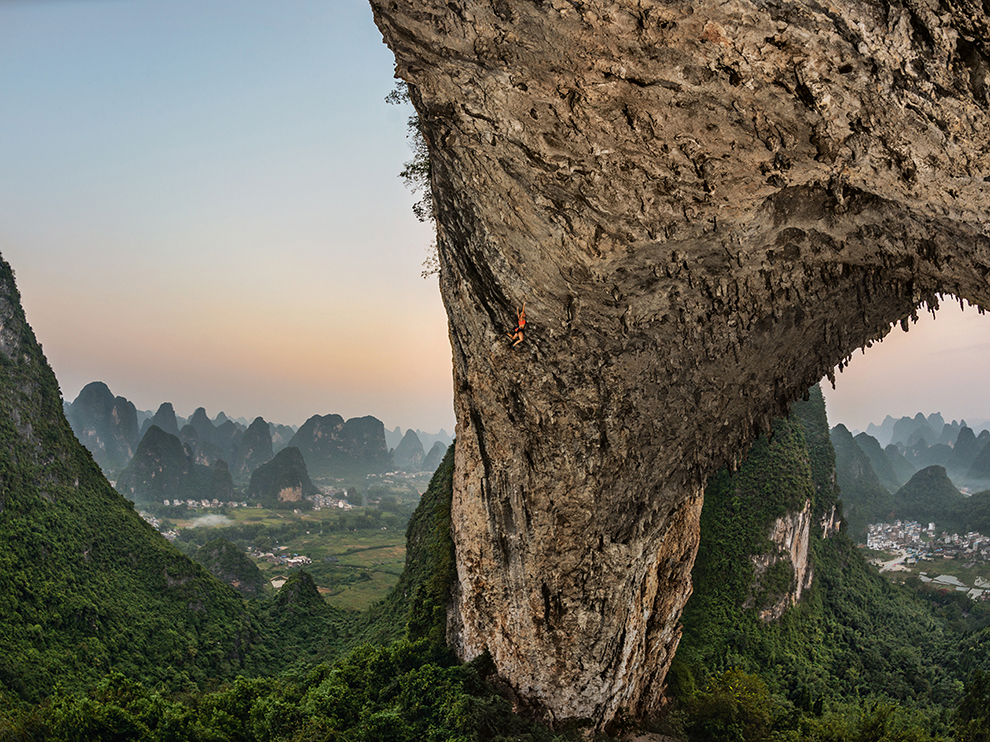
29 Jun Empire of Rock, China’s Supercaves
In the above picture, climber Emily Harrington takes the hard way up southern China’s Moon Hill, an arch from the remains of a collapsed cave. Sightseers have an easier option; a paved walkway to a viewpoint beneath the arch, then a dirt path to the top.
McKenzie Funk, has written a fascinating article for National Geographic about how explorers are using laser scanners to see China’s giant caverns as never before. Here are several excerpts from the article:
Crouched on the floor in the mud in one of the biggest cave chambers in China, one of the biggest in the world, we can hear nothing but our breathing and the drip, drip of distant water. We can see nothing but a void. Then we turn to the screen of a laptop connected to a laser scanner, and the Hong Meigui Chamber reveals itself. We float up to its roof, which forms a cathedral arch 950 feet above the cracked mud where we are crouched to avoid the scanner’s beam. We hover over a lake. We touch down on a beach on the far side.
“It’s like Google Earth,” I say.
“It’s like The Matrix,” says Daniela Pani, the Sardinian geoscientist operating the laptop.
The digital version of the cave is more real than real life. Real caves are dark. Extremely dark. In a big chamber, even with modern LED headlamps many times brighter than the old carbide ones, you can see 150 or so feet ahead or above, and not much more. Mist or emptiness overwhelms even the brightest beam. It’s natural to want to see more.
Wanting to see more is what drew Andy Eavis to southern China more than 30 years ago. Here in the still cloistered country was the planet’s greatest concentration of the otherworldly topography known as karst: sinkholes, stone towers, forested spires, and disappearing rivers that form over centuries as rainwater dissolves a soluble bedrock, usually limestone. And hidden inside and underneath this green mountainscape—the same iconic scenery found in traditional Chinese paintings—was the planet’s greatest concentration of undocumented caves.
That’s also why Eavis has come yet again to China, this time toting well-worn caving bags overloaded with new laptops, batteries, and a rented 3-D laser scanner worth more than $100,000. In a cave, technology can capture what the human eye cannot. His plan is to spend a month in at least three of the biggest chambers in the world, turn on the scanner—and measure them precisely for the first time.
A white-haired plug of an Englishman in his late 60s, who made a fortune in plastics manufacturing, Eavis is often said to have discovered more miles of territory than anyone alive. Expeditions he has led have documented 330 miles of new cave passages, and counting. “That’s why I cave,” he says. “To explore. In caving you can be the first. If there were countries left to explore, continents to explore, I would.
Click here to Continue Reading photography.nationalgeographic.com



Sorry, the comment form is closed at this time.